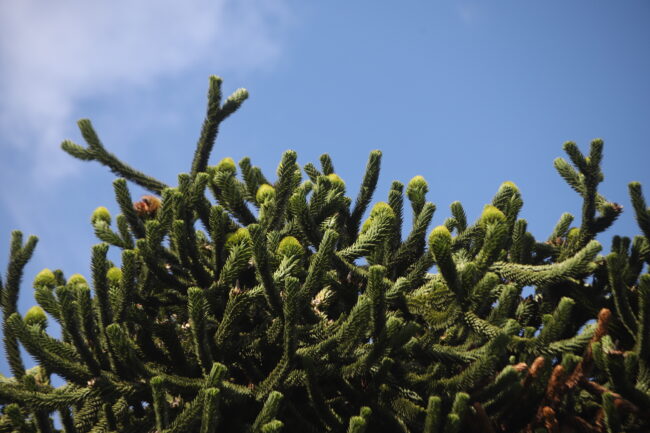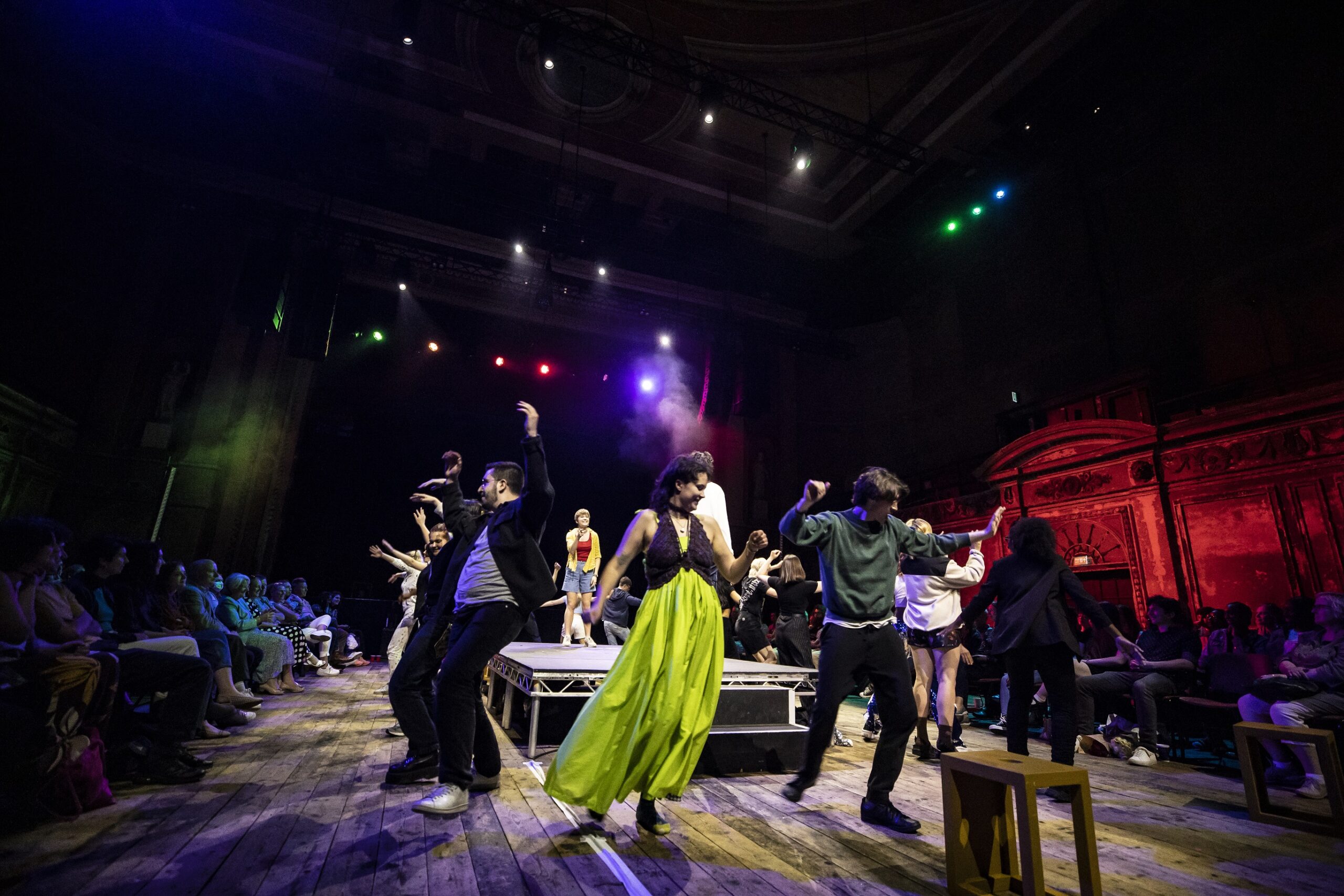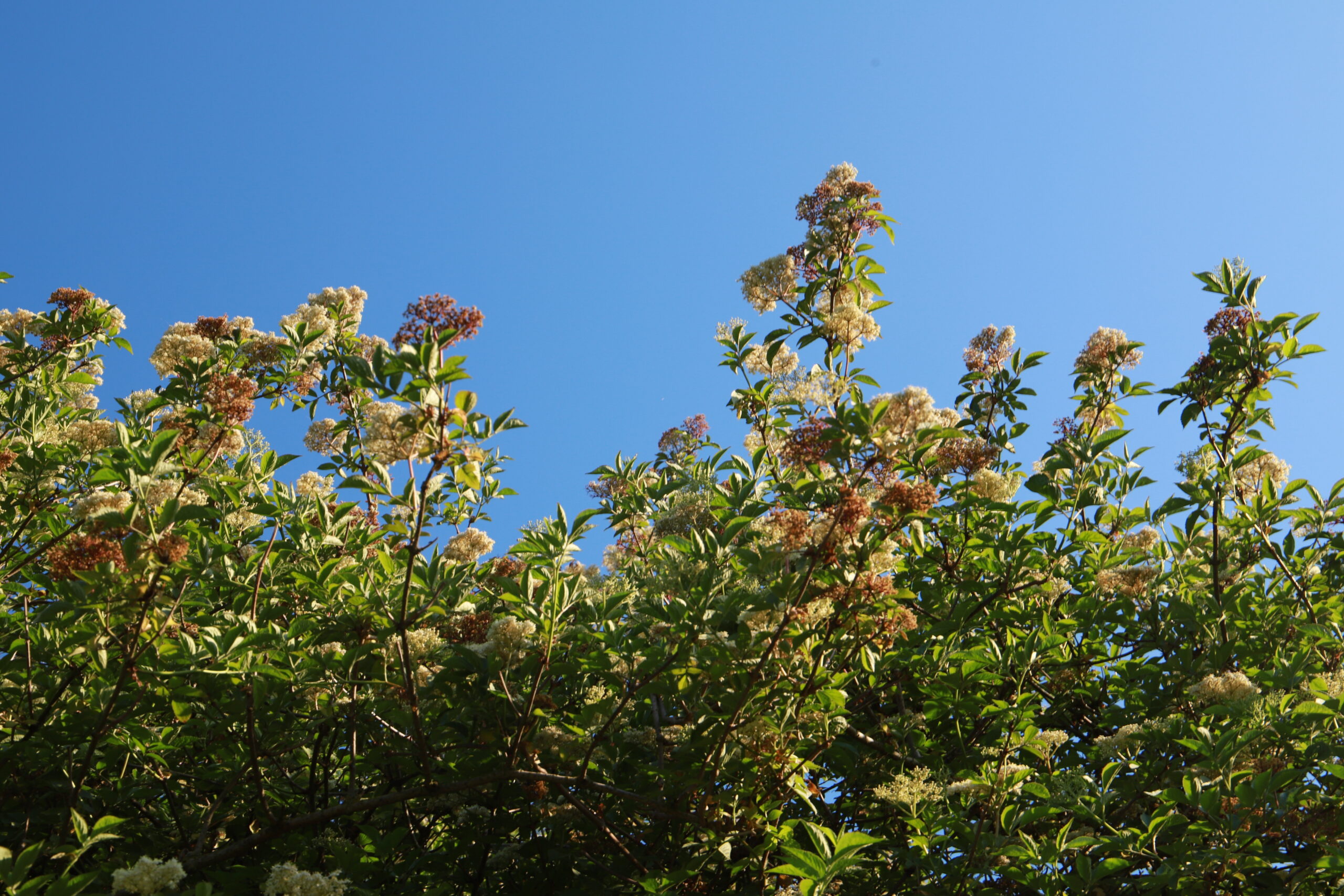Next time you are visiting, see if you can spot our August tree of the month, as described by Stephen Middleton from the Friends of Alexandra Park…
The Monkey Puzzle Tree (Araucaria araucana) is an evergreen conifer that has been around since the Jurassic period and its spiky leaves may well have been a defence against browsing dinosaurs. It is our Tree of the Month for August. This tree can be found along the western edge of the Pitch and Putt course (the eastern edge of the South Slope) and on the What three words app.: plug.cult.talked.
This specimen has certainly been around for a while; it can be seen in a Dutch film of BBC TV series “In our Garden” showing the garden in the park in 1946 with the tree just behind the garden itself.
This tree is also called the Chilean pine and can be found on the lower slopes of the Andes in both Chile and western Argentina, but it is in long term decline in its native range.
The trees first came to Britain in 1795 after Archibald Menzies attended a banquet hosted by the governor of Chile. He saw the nuts on the table, took some away and successfully germinated six of them.
Chilean pines can grow up to 25m tall in this country and twice that in their natural habitat. The branches of the tree start by growing upwards but their weight gradually pulls them down. Individual leaves can last for 15 years photosynthesising.

Male cones are usually found in groups dangling from the ends of branches whereas the female cones grow singly and upwards. Chilean pines usually exist as separate male and female trees. Our tree is a female with large round cones taking two years to mature. One of the two other monkey puzzles in the park is small and male and can be seen near the giant redwoods (What three words app.: next.cook.book).
Why is it called a monkey puzzle? Simply because someone said that monkeys would have trouble climbing these prickly trees.
The scientific name for this tree comes from the indigenous Araucarian people who lived in southern Chile and Argentina.
The tree was used for boat building as the wood is both strong and easily worked. It is still prized for turning and carpentry.
The nuts are edible raw or cooked and have been used for making alcoholic drinks. In this country jays and squirrels find them very much to their taste.
Keep an eye out for Whitby jet. It is a gemstone made from old fossilised monkey puzzle trees or possibly their close relatives.






